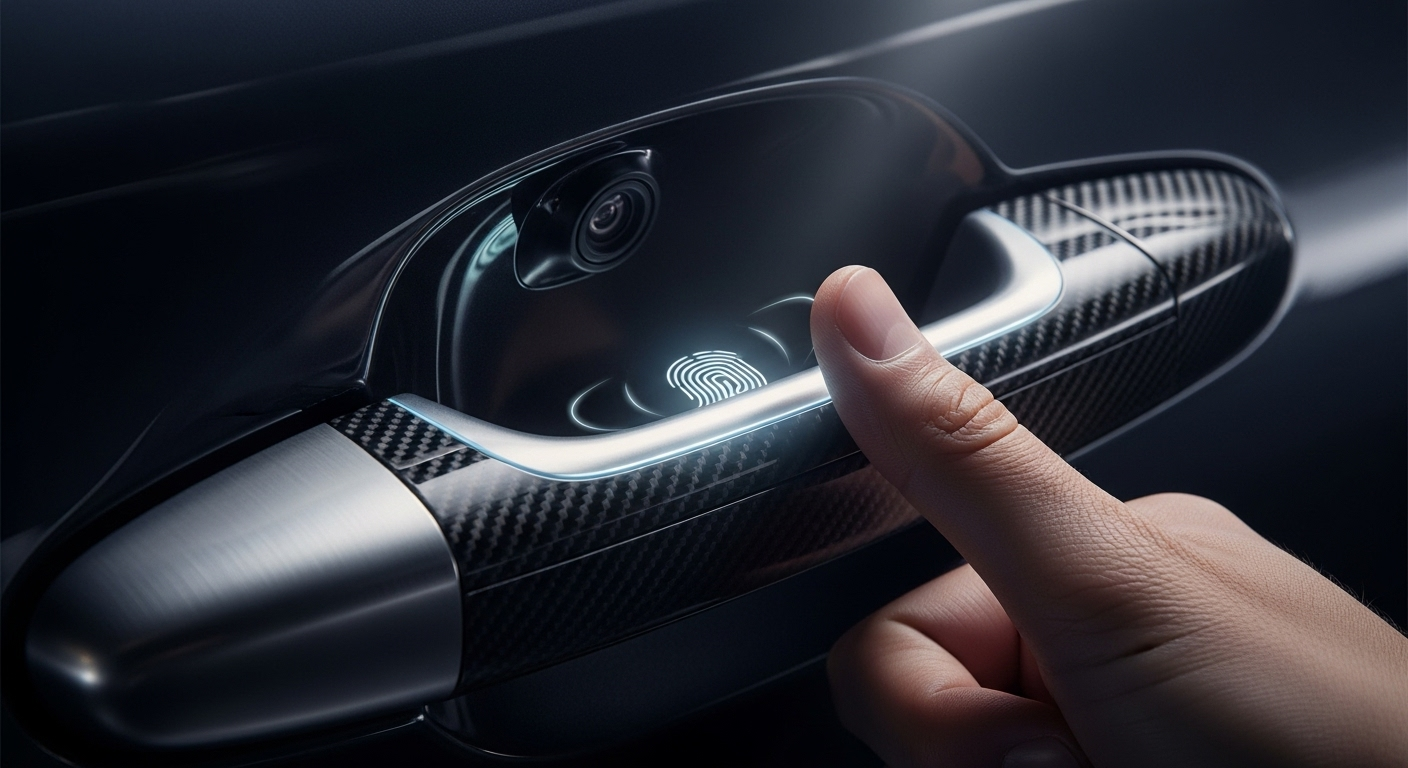Biometric Vehicle Access: The Future of Car Security
Imagine approaching your car, and without reaching for your keys or smartphone, the doors unlock, the engine starts, and your seat adjusts to your preferred position. This isn't science fiction; it's the cutting-edge world of biometric vehicle access. As automotive technology advances, biometrics are revolutionizing how we interact with our vehicles, promising enhanced security, convenience, and personalization. Let's dive into this fascinating realm where human biology meets automotive engineering.

Early adopters of this technology focused primarily on fingerprint recognition for starting the engine. However, as the technology has matured, we’re seeing a broader range of biometric applications in vehicles. From facial recognition to retinal scans and even gait analysis, car manufacturers are exploring diverse ways to integrate human biological traits into vehicle access and operation.
How Biometric Vehicle Access Works
At its core, biometric vehicle access relies on unique biological characteristics to identify authorized users. The process typically involves three main steps: data capture, data processing, and matching. When a user approaches the vehicle, sensors capture the relevant biometric data – be it a fingerprint, facial features, or even the person’s walking pattern. This data is then processed and compared against pre-registered profiles stored in the vehicle’s secure database.
Advanced algorithms ensure that the matching process is both quick and accurate. If a match is found, the vehicle grants access, potentially unlocking doors, adjusting settings, and even starting the engine. The entire process often takes less than a second, providing a seamless experience for the user.
Types of Biometric Technologies in Cars
The automotive industry is experimenting with various biometric technologies, each offering unique advantages:
-
Fingerprint Recognition: Perhaps the most familiar form of biometric authentication, fingerprint sensors can be integrated into door handles or start buttons.
-
Facial Recognition: Cameras mounted on the vehicle can identify authorized users as they approach, offering a hands-free access solution.
-
Retinal Scanning: While less common, some high-end vehicles are exploring retinal scans for ultra-secure authentication.
-
Voice Recognition: This technology can be used not just for access but also for in-car controls and personalization.
-
Gait Analysis: Emerging systems can identify users based on their unique walking patterns as they approach the vehicle.
Enhanced Security and Anti-Theft Measures
One of the primary drivers behind biometric vehicle access is the potential for vastly improved security. Traditional key fobs can be cloned or hacked, but replicating someone’s biometric data is exponentially more difficult. This makes biometric systems a formidable deterrent against car theft and unauthorized access.
Moreover, biometric systems can be combined with other security measures for multi-factor authentication. For instance, a car might require both a fingerprint and a facial scan before granting full access, adding an extra layer of security for high-value vehicles.
Personalization and User Experience
Beyond security, biometric systems offer unprecedented opportunities for personalization. Once a vehicle recognizes its user, it can automatically adjust various settings to that individual’s preferences. This might include seat position, mirror angles, climate control settings, and even music playlists or navigation favorites.
For families or businesses with multiple drivers sharing a vehicle, this level of personalization ensures that each user has a tailored experience every time they enter the car. It eliminates the need for manual adjustments and enhances overall comfort and convenience.
Challenges and Considerations
While the potential of biometric vehicle access is exciting, it’s not without challenges. Privacy concerns are at the forefront, as users may be wary of their biometric data being stored in their vehicles. Manufacturers must implement robust data protection measures and be transparent about how this sensitive information is handled and stored.
There are also technical challenges to overcome. Biometric systems need to work reliably in various conditions – from bright sunlight to complete darkness, and in different weather conditions. False positives or negatives could lead to frustration or security risks, so the technology must be near-perfect before widespread adoption.
The Road Ahead: Integration and Innovation
As biometric technology continues to evolve, we can expect to see more innovative applications in vehicles. Integration with smart home systems could allow your car to communicate with your house, adjusting home settings as you leave or arrive. Health monitoring is another frontier, with cars potentially able to detect driver fatigue or stress levels through biometric data.
The future might also bring more advanced AI integration, where your car not only recognizes you but learns your habits and preferences over time, creating an increasingly personalized and intuitive driving experience.
In conclusion, biometric vehicle access represents a significant leap forward in automotive technology. It promises to make our cars more secure, more personalized, and more integrated into our daily lives than ever before. As the technology matures and becomes more widespread, it has the potential to redefine our relationship with our vehicles, turning them into truly smart, responsive companions on the road.





